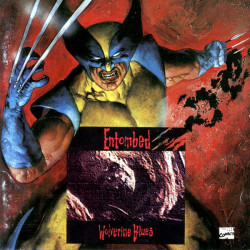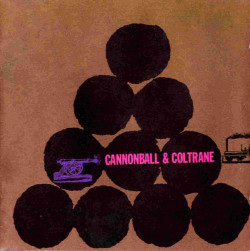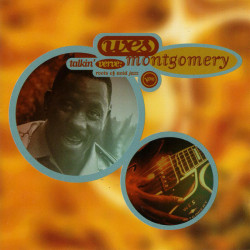Archive for category DP⓪
Renaming the System
I’m coming back to what I was calling Fixed Integer Notation and renaming it the Decimal Pitch System.
Still working on practical applications, but the mathematical obstacle that I thought I had to overcome is already taken care of by the system of Cents. The cent is generally recognized as the smallest differentiation in pitch perceptible to human hearing. With this in mind, there’s no need to figure out what a microtonal note is fractionally; doing this could mean different things depending on the octave, due to lower pitches being produced by longer vibrational wavelengths. But the point was to find a way to name a microtonal pitch independent of the octave. For example “5” represents the note “D”. “5.5” is the exact quartertone between D and D#. What if you’ve got a note that is slightly flatter than that? It it 5.4? 5.3? It’s still useful as an approximate system, but I was thinking to get it accurate, you might need many decimal points and that’s not practical at all. But using cents only one more decimal point is needed. Every possible note can be written from 0.00 — 11.99 (exactly A440 to an extremely sharp G#).
Ĝis la revido!
How many notes are there?
Here’s another video by someone else. Maybe I should make videos at some point. Sorry if I keep going over the same material but no one really seems to be paying attention, I’m just ironing out the concept more and more. Hopefully.
How many keys are there?
Here’s a clip of Victor Wooten explaining a very basic concept of music theory that is not always explained so simply. The answer you get is easy once you know, but it’s not the intuitive answer. Even he got it wrong at first. Why? Because in traditional music theory there are 6 keys that overlap:

(this image from the circle of fifths wiki does not even bother to name a♯ and a♭ which is…interesting)
These keys, disregarding the sharp/flat system, contain the same notes. Sure, if you are intentionally doing something clever with modulation in a piece, like going around the Circle, you would never go from E to C♭ in your head or on paper, but the sound is no different in equal temperament. (Just noticed I’ve been spelling “temperament” wrong for as long as I’ve been using it. Never heard the “a” pronounced, that’s something new.)
This matters (to me) because as I’ve said in the previous posts, there’s nothing inherently “natural” to the “natural note”. There’s only the note you start on and the intervals. Take the point that modes are not keys but scales. If you are playing in C, you can start playing a C scale melody but let’s say you switch to playing the Dorian mode. The key hasn’t changed, you are still playing entirely on the white keys, but the tonal center has, and the intervals of the scale have. That’s a difference you can hear. There’s a game you can play with traditional music theory that I’ve come to appreciate more than dismiss the more I get into it, but the average person (non-musicians; people without perfect pitch) really are never going to. That’s fine but it’s not the thing I’m interested in. Hopefully I can spend more time on interesting things in the future.
Gamelan & Sonic Youth
In many ancient traditions and contemporary settings, music is not written out for the performance. It’s worked out among the musicians, maybe by a lead composer type all at once, or by the group over a period of time. The piece or song is memorized and maybe at some point has a life outside that group of musicians, so it becomes like an oral tradition of storytelling.
So, let’s say you wanna write that down. Seems reasonable that you’d try to do this with the tools you have, which is staff notation invented for western orchestral music. But unless the musicians in question were also trained in this method and set out to follow the rules as such, you are going to end up with a crude approximation. Two examples I’ve been really interested in over the years is traditional Balinese Gamelan and the 80s-90s work of punk/art rock group Sonic Youth.
Worth noting that Gamelan music has a native written form (a few in fact), and that the harmonic ideas of SY have roots in the music of avant garde composer Glenn Branca, who has his own presumably meticulous system. But in practice, both of these types are just winging it. In addition to not adhering to a preexisting written standard, they also both are using either bespoke or customized instruments and tunings. (Really hate the use of “bespoke” to mean “custom” but it fits here.) A Gamelan orchestra—all the gongs and metallophones—are made as a piece, tuned to itself. Each player isn’t bringing the reyong or gangsa they are leasing from Guitar Center, these things only exist together as one thing and can’t be individually adjusted. If one were lost or broken, you can’t even swap one out from another group. Likewise, when SY’s van was stolen in 1999, the sound of the band was heavily impacted. They were touring with 24 heavily customized guitars; almost a different set for each song. All of the older songs from that point had to be reworked and relearned.
Here’s the most comprehensive list of SY tunings, which, despite appearing to be a fan site in design and guesswork is in fact their official site. The band themselves apparently did not keep exact notes and any 3rd party’s detective could be just as good. I have even seen versions that note differences in the unison tunings (i.e. “second D slightly flatter”) and this is where a decimal system of tuning would really be helpful.
It’s these slight differences that create a sound totally different than what can be achieved through normal western intonation. The shimmering textures most…notable…here are created very deliberately (tho not always exactly or uniformly) by the dissonances that are reduced or edited out completely of regular music.
The very complex numbers that you can wind up with when referring to a note by it’s frequency in Hz can be replaced with a simple “𝑥.𝑥𝑥” by using the 0-11 formula and then the deviation .01-.99 in cents, ultimately leading one to a very snappy conclusion.
Fixed Integer Notation: It Looks Real Bad When the Title Is Too Long
See, NOW it’s gone too far. Here we have an example where we’re no longer talking about the thing we’re talking about, but the delivery system of the idea. Can we fix the aesthetics of the delivery system? Sure, but it’s kinda subjective. most people, maybe that doesn’t bother them, to have a title going to two lines with a big space between them. Could also look different depending on your device and operating system, browser, etc. Best to leave that whole issue aside.
Looking over these posts, I realize I’ve left a piece out. I was working on it in my head, and I was working out some stuff in Notepad, then I had to research it more, and I posted the research notes as if I had already explained what I was working on in a public post. Or did I do that on purpose? Not sure. And this is the kind of thing I’m doing all the time and it’s why I’m not really liked, as a person. I’ve tried to focus this energy into artwork over the years, but I think this cause me to neglect certain social skills which leads to a feedback loop, making things worse. I’m not sure how much I can fix the problem at this point in life, but I would like to continue to work on this notation project which I think could be helpful but maybe I should take the work offline. In the meantime, I should really get back to reviewing records.






Recent Comments